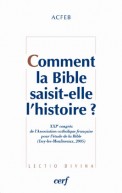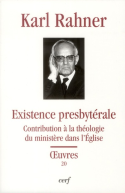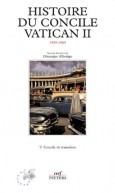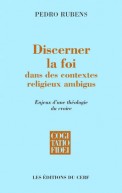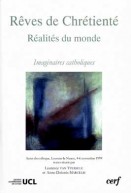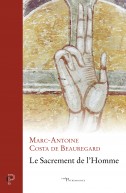Le christianisme comme style, 2 - CF 260
Collection Cogitatio Fidei - N° 261
624 pages - oct. 2007
59,40€
Le projet d'exprimer l'identité chrétienne en termes de « style » est déjà ancien ; Friedrich Schleiermacher et Hans Urs von Balthasar l'ont mené à bien, le premier selon une orientation herméneutique, le second dans le cadre d'une phénoménologie théologique. Le concept de « style » permet de penser la singularité de telle œuvre, l'« allure » qui ne relève plus d'une comparaison classificatrice mais de la manifestation d'une unicité incomparable et d'une véritable innovation. « Tout style est la mise en forme des éléments du monde qui permettent d'orienter celui-ci vers une de ses parts essentielles » (Maurice Merleau-Ponty). Ainsi comprise, l'approche stylistique du christianisme évite de réduire celui-ci à son enseignement doctrinal mais permet d'honorer l'ensemble de la vie chrétienne comme une manière d'habiter le monde. Apparaît, en filigrane, le principe de concordance entre le contenu et la forme, si essentiel pour caractériser la qualité stylistique d'une œuvre et facilement applicable à la question de la crédibilité de la foi chrétienne. Comme l'indique son sous-titre, l'ouvrage progresse simultanément sur deux versants : un diagnostic théologique du moment présent en rapport avec nos débats sur la modernité et la postmodernité, et, intimement liée à cette évolution, une réflexion épistémologique sur une manière de faire de la théologie. Après une Ouverture qui fait entendre l'ensemble de la « thématique » , la première partie est consacrée au diagnostic (I), la deuxième et la troisième à la manière de faire de la théologie, en lien avec la tradition spirituelle du christianisme (II) et appuyée sur la lecture des Écritures (III). Il s'agit là des deux versants, externe et interne, d'une même présence chrétienne dans notre histoire, visée par la terminologie du « style » : le christianisme comme style. Celui-ci trouve dans la dernière partie sa pleine explicitation (IV).
--
The project to express the Christian identity in terms of ‘style’ is not a new one; Friedrich Schleiermacher and Hans Urs von Balthasar both succeeded, the first with a hermeneutic approach, the second in the context of theological phenomenology. The concept of ‘style’ permits us to think the uniqueness of an oeuvre; the ‘allure’ which does not emanate from a classifying comparison but from the manifestation of an incomparable unity and a veritable innovation. ‘All style is an arrangement of elements of the world that allows us to orient them towards one of their essential parts’ (Maurice Merleau-Ponty). In this sense, the stylistic approach to Christianity avoids reducing it to its doctrinal teaching, and permits us to honour the ensemble of Christian life as a way of living in the world. There appears in filigree the principle of concordance between contents and form, imperative to characterise the stylistic quality of a work and easily applicable to the question of the credibility of the Christian faith. As the sub-title indicates, this work advances simultaneously on two planes: a theological diagnostic of the present moment in relation with our debates on modernity and post modernity, and, intimately linked to that evolution, an epistemological reflection on a way of practicing theology. After an Overture which exposes the ensemble of the ‘thematic’, the first part is devoted to a diagnostic (I), the second and the third to a way of practicing theology linked to the spiritual tradition of Christianity (II) and based on the reading of the Scriptures (III). These are two planes, interior and exterior, of the same Christian presence in our history, referred to by the terminology of ‘style’: Christianity as a style, fully explained in the final part (IV).
--
The project to express the Christian identity in terms of ‘style’ is not a new one; Friedrich Schleiermacher and Hans Urs von Balthasar both succeeded, the first with a hermeneutic approach, the second in the context of theological phenomenology. The concept of ‘style’ permits us to think the uniqueness of an oeuvre; the ‘allure’ which does not emanate from a classifying comparison but from the manifestation of an incomparable unity and a veritable innovation. ‘All style is an arrangement of elements of the world that allows us to orient them towards one of their essential parts’ (Maurice Merleau-Ponty). In this sense, the stylistic approach to Christianity avoids reducing it to its doctrinal teaching, and permits us to honour the ensemble of Christian life as a way of living in the world. There appears in filigree the principle of concordance between contents and form, imperative to characterise the stylistic quality of a work and easily applicable to the question of the credibility of the Christian faith. As the sub-title indicates, this work advances simultaneously on two planes: a theological diagnostic of the present moment in relation with our debates on modernity and post modernity, and, intimately linked to that evolution, an epistemological reflection on a way of practicing theology. After an Overture which exposes the ensemble of the ‘thematic’, the first part is devoted to a diagnostic (I), the second and the third to a way of practicing theology linked to the spiritual tradition of Christianity (II) and based on the reading of the Scriptures (III). These are two planes, interior and exterior, of the same Christian presence in our history, referred to by the terminology of ‘style’: Christianity as a style, fully explained in the final part (IV).
- Dimensions : 135x215x30
- ISBN : 9782204085342
- Poids : 740 grammes
DU MÊME AUTEUR
L'Existence presbytérale
Contribution à la théologie du ministère dans l'Église
de Karl Rahner
432 pages - oct. 2011
Histoire du concile Vatican II (1959-1965), 5
832 pages - sept. 2005
Discerner la foi dans des contextes religieux ambigus - CF 235
de Pedro Rubens
560 pages - janv. 2004
> VOIR TOUS LES LIVRES DE l'AUTEUR


